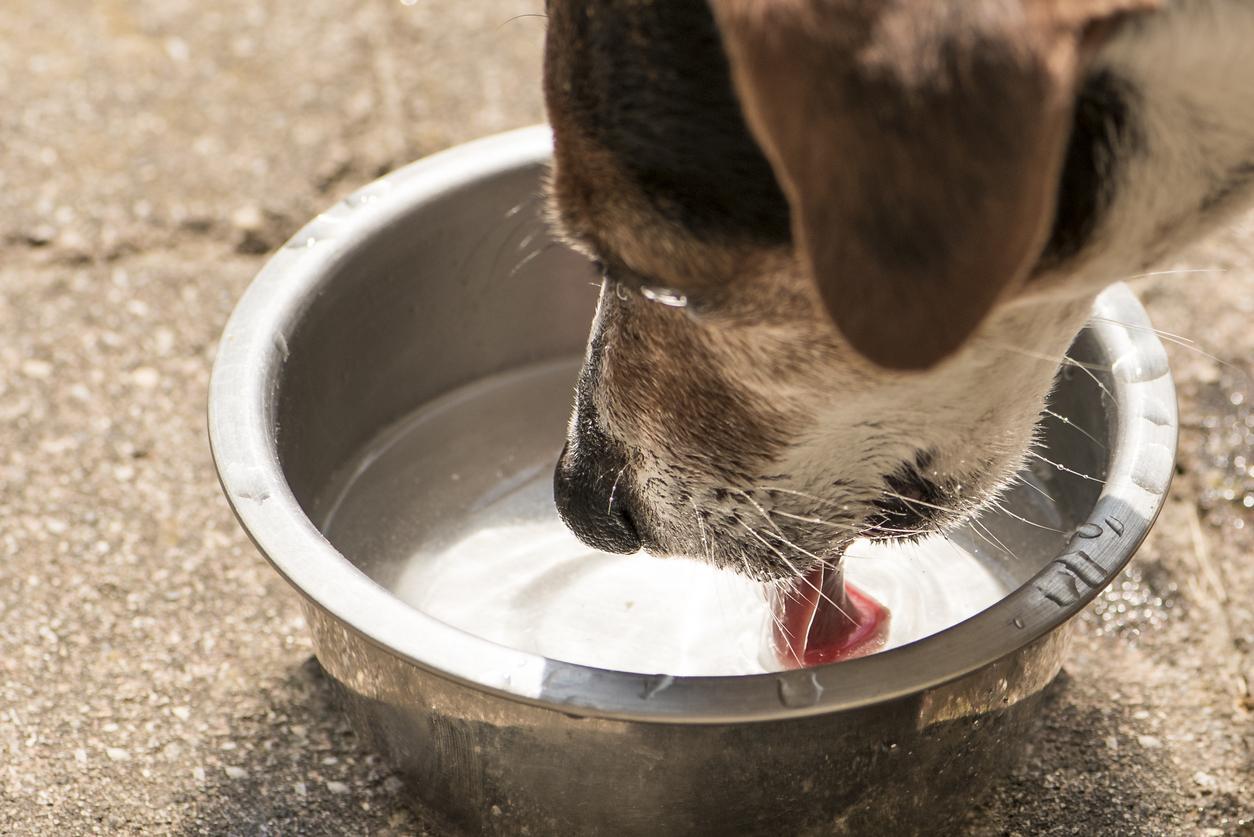Why Is My Dog Turning Gray?



See files for Dogs
Have you every wondered whether a dog’s hair can turn gray? When dogs grow older, you may notice that their coats start to change color. This however is not always because of age. There are many reasons despite age that a dog’s hair can turn gray. This reasons can range from diet to anxiety or stress. For this reason, in this AnimalWised article, we aim to tell you reasons and causes as to why your dog’s hair is turning gray.
- Can dogs go gray?
- Why is my dog turning gray? - Aging
- Premature gray hair in dogs
- Premature graying in dogs due to poor nutrition
- Water and premature graying dogs
- Genetic disorders that can cause graying
- Why is my dog turning grey if it is young?
- What is the normal age for a dog to go gray?
- Can I dye my dog’s grey hair?
Can dogs go gray?
In terms of understanding why your dog is turning gray, it is also important to know what gives color to fur. A dog’s coat corresponds, obviously, to its genetics. Each breed has its own characteristics, colors, textures and shapes. When dogs are mixed breeds, their coats will depend on the origin of one of the parents, or a mixture of both.
Melanin is the pigment that determines the color of an animal’s coat, like with humans. Gray hair appears when the melanin in a dog’s body begins to decrease. Due to a decrease in this dark pigment, hair becomes discolored. The decrease of melanin, however, is not always due to age. Therefore, we can safely state that not all dogs turn gray because of aging, there are other causes to this discoloration.
Why is my dog turning gray? - Aging
As in humans, aging is the leading cause of gray hair in dogs. Grey hair in dogs begins to manifest at around 7 or 8 years. If your dog is turning grey at this stage in its life, it is very common and nothing to worry about.
White fur first begins to be apparent on the face of the dog, especially on the snout and around the eyes. From this area, it gradually spreads across the rest of the body. In addition to this sign, other signs of old age in dogs can include:
- failing senses: sight, smell, hearing etc
- the appearance of urinary incontinence
- increase in lethargy and tiredness
- Weight change

Premature gray hair in dogs
A large reason why dogs may turn grey prematurely is because they are stressed. Stress can be triggered by multiple causes, such as loneliness, the feeling of abandonment, death of a loved one, the arrival of a baby or another pet etc.
A stressed dog dog shows reluctance, sadness or anxiety. All of these factors increase and fasten the appearance of premature graying. It is also important to know that dogs are influenced greatly by their owners and therefore perceive the stress and anxiety of their family. If you are incredibly stressed, this anxiety can be passed on unconsciously to your pet.
Premature graying in dogs due to poor nutrition
Premature graying in dogs can also be caused by poor nutrition. If a dog is not receiving the nutrition it needs, its hair can turn grey.
Dogs were originally carnivorous animals, however, with domestication a dog’s system has been adapted greatly. Due to this change in diet, many dog’s are even considered to be omnivorous animals. If you choose to feed your dog homemade food, it is incredibly important to include meat, and make sure that you consult you veterinarian to ensure that your dog is receiving all the nutrients it requires. Some people try to replace meat with vegetables of grains, unfortunately, this doe snot provide the animal with sufficient nutrients. It is advisable to introduce a variety of meats in your dog’s diet, in this way, a dog will receive all the nutrients and proteins it needs. Studies have shown that dogs need to ingest appropriately 70% of meat and fish and 30% fruit, vegetables or cereals.
This deficiency however does not only appear as a result of homemade diets. Some cheap store-bought foods of low quality can cause graying in dogs. Therefore, we recommend being incredibly attentive to the ingredients and components listed on the packaging of the dog food.
Water and premature graying dogs
One of the causes of graying in dogs is because of the water that they drink. It has been proven that the appearance of gray hair can be due to the amount of chlorine or fluoride in the water. The presence of these chemical components in water can result in a significant clarification of the coat. Not only can this contaminate water affect the dog’s coat, but it can also have an incredibly negative effect on a dog’s health. The consumption of contaminated water can cause kidney failure, kidney stones etc. For this reason, it is recommended to offer your dog water with weak mineralization, the same water which is recommended for humans.

Genetic disorders that can cause graying
Dogs with black and dark fur are more likely to show gray hair at an earlier age than dogs with lighter fur. This does not mean that light-haired dogs do not get gray hair, but the appearance isn’t as contrasted. If you believe that this might be the reason that your dog is graying, do not fret. This graying is a natural process that can be treated which proper nutrition and a healthy lifestyle.
Why is my dog turning grey if it is young?
Gray hair in young dogs less than five years old, or early onset bleaching, is a possible sign that something is not right. The causes could be as a result of what we already mentioned. However, this graying can also be caused by severe fear or anxiety. In this case, we recommend visiting your veterinarian in order to rule out any health problems or emotional issues. Premature aging in very young dogs is not normal and therefore should be treated as soon as possible.

What is the normal age for a dog to go gray?
Under normal conditions, gray hair begins to appear in dogs at about seven or eight years old. This is roughly the age that dog changes from being an adult to elderly. Aging requires that an owner pays more attention to the behavior and health of their dog. However, just because a dog’s hair is changing color, it does not mean that their health will also begin deteriorating. Dogs normally start showing more intense signs of aging from about 10-12 years of age.
If gray hair appears before this age, it is necessary to review the above mentioned causes to know if you are facing premature aging in dogs. This premature aging, as stated before, can be due to stress, anxiety or other problems that require adequate treatment.
Can I dye my dog’s grey hair?
There are currently dyes on the market which are specifically designed to modify the coloration of a dog’s mantle. However, we do not recommend dying a dog’s hair, ever. The appearance of gray hair is a natural process of a dog’s life. This artificial change can alter a dog’s sense of smell, their own odor and inevitably damage their relationship with other dogs.
If you want to read similar articles to Why Is My Dog Turning Gray?, we recommend you visit our Geriatrics category.








